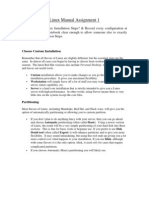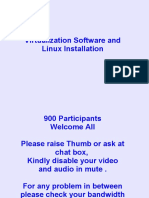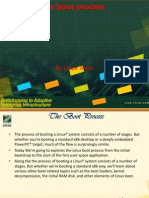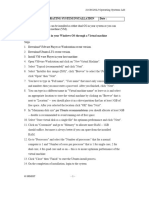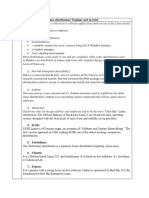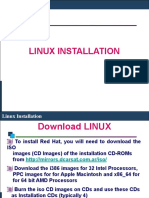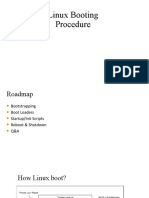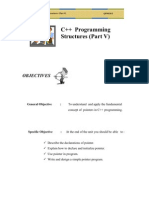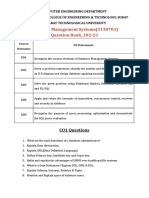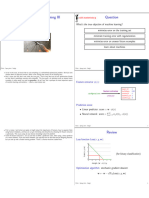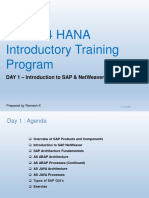0% found this document useful (0 votes)
85 views29 pagesChapter 2 Installation of Linux Distributions
The document discusses the hardware requirements and installation methods for Linux. It describes the minimum processor, memory, and hard disk space needed. It also covers different ways to install Linux including via FTP, HTTP, CD-ROM, or USB drive. The document outlines partitioning methods like manual, automatic, or using fdisk. It also discusses boot loaders and describes features of GRUB.
Uploaded by
Syafiq FauziCopyright
© Attribution Non-Commercial (BY-NC)
We take content rights seriously. If you suspect this is your content, claim it here.
Available Formats
Download as PPTX, PDF, TXT or read online on Scribd
0% found this document useful (0 votes)
85 views29 pagesChapter 2 Installation of Linux Distributions
The document discusses the hardware requirements and installation methods for Linux. It describes the minimum processor, memory, and hard disk space needed. It also covers different ways to install Linux including via FTP, HTTP, CD-ROM, or USB drive. The document outlines partitioning methods like manual, automatic, or using fdisk. It also discusses boot loaders and describes features of GRUB.
Uploaded by
Syafiq FauziCopyright
© Attribution Non-Commercial (BY-NC)
We take content rights seriously. If you suspect this is your content, claim it here.
Available Formats
Download as PPTX, PDF, TXT or read online on Scribd
/ 29





